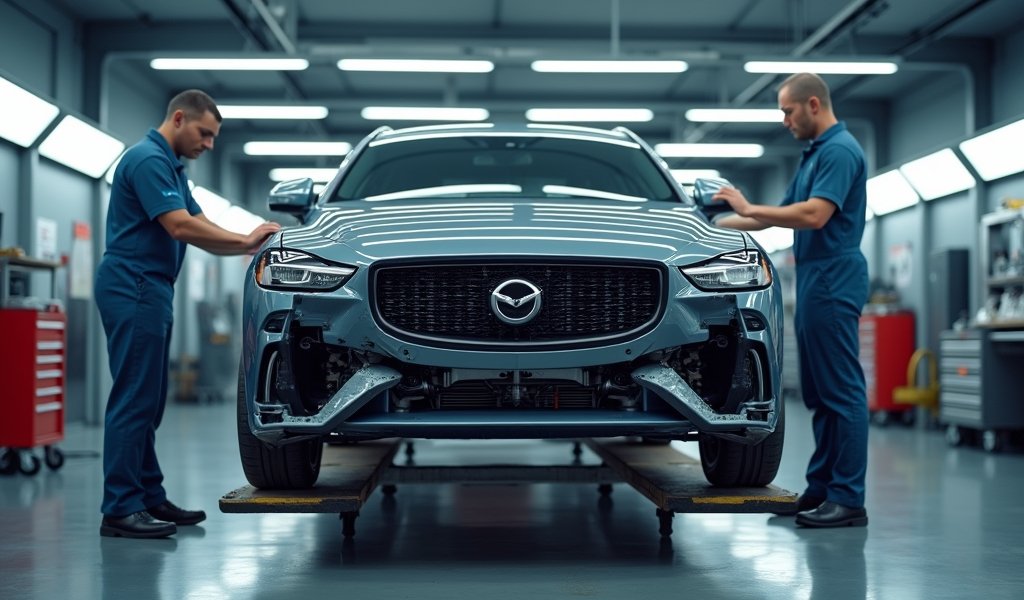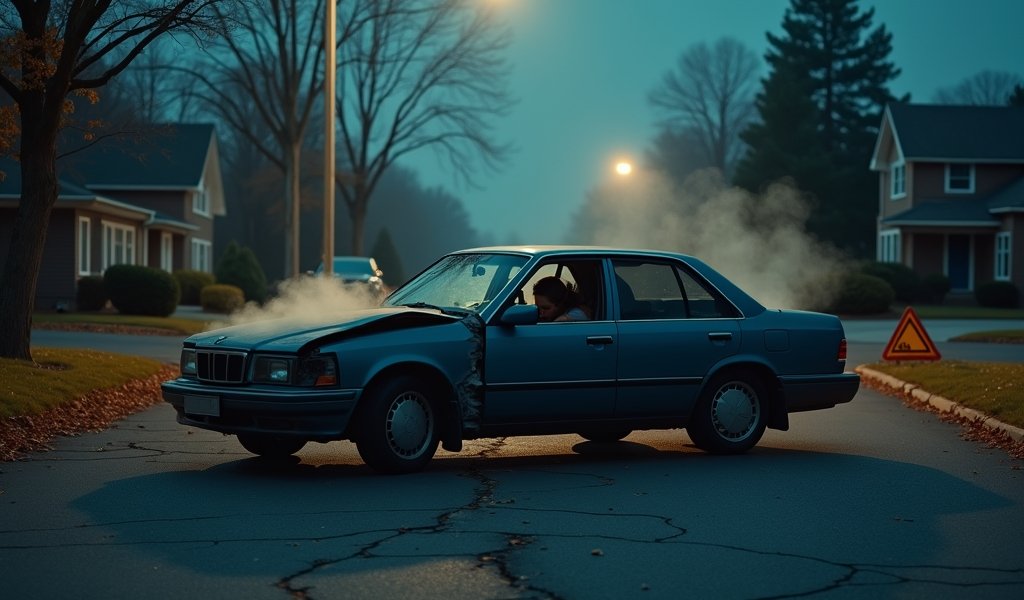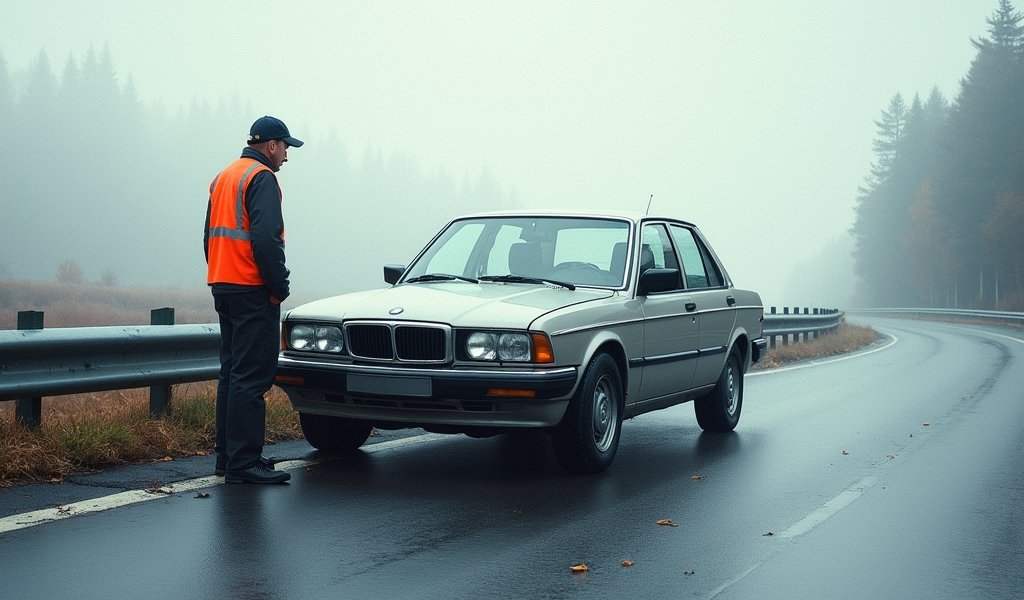Overview
This article provides guidance on whether to move your vehicle after a car accident, balancing safety concerns, legal requirements, and evidence preservation needs. It emphasizes prioritizing personal safety while documenting the accident scene, communicating effectively with other parties, understanding insurance implications, knowing when professional towing is necessary, and managing emotional responses to make clear decisions.
Table of Contents
- Immediate Decisions: Should You Move Your Vehicle?
- Safety First: When Moving Your Car is the Right Call
- Legal Implications of Moving Your Vehicle After a Crash
- Documentation Needs Before Moving Your Car
- Communication Steps with Other Parties
- Insurance Considerations When Relocating Your Vehicle
- Towing Options: When DIY Isn’t Safe
- Managing Your Emotional Response to Make Clear Decisions
- Conclusion: Navigating the Aftermath with Confidence
- Frequently Asked Questions
Immediate Decisions: Should You Move Your Vehicle?
The moments following a car accident unfold like a sudden thunderstorm – unexpected, jarring, and leaving you wondering which way to turn. Among the flurry of thoughts racing through your mind, one question stands paramount: “Should I move my car after an accident?”
The answer isn’t as straightforward as checking a box on a form. Like deciding whether to bring an umbrella on a cloudy day, it requires assessing multiple factors in real-time. Your decision hinges on three critical pillars: safety concerns, legal requirements, and evidence preservation.
In minor fender benders where vehicles remain operational and pose no traffic hazard, many states actually require you to move your car to the shoulder or a nearby safe location. This approach prevents the domino effect of secondary accidents that can turn a small incident into a highway catastrophe.
However, in more severe collisions where vehicles are significantly damaged or injuries have occurred, the calculus changes dramatically. In these situations, your vehicle becomes both evidence and potential hazard – a delicate balancing act that requires thoughtful navigation.
Before making any moves, take a breath. The decision you make in these crucial moments can impact everything from your insurance claim to potential legal proceedings down the road. Let’s walk through the decision tree together, step by careful step.
Safety First: When Moving Your Car is the Right Call
Safety isn’t just a consideration after an accident – it’s the north star guiding every decision. Think of your disabled vehicle as a boulder in a stream; traffic will continue flowing around it, creating dangerous currents and eddies of risk.
When should safety concerns trump everything else? Imagine you’ve had a minor collision on a busy highway curve where visibility is limited. Your vehicle, though drivable, sits partially in an active lane. In this scenario, following proper accident protocols means recognizing the imminent danger of leaving your car in place.
According to the National Highway Traffic Safety Administration, secondary crashes occurring at accident scenes account for approximately 18% of all highway fatalities. These sobering statistics underscore why moving your vehicle when safe to do so isn’t just recommended – it’s potentially life-saving.
However, safety works both ways. If moving your vehicle requires driving a damaged car that might be mechanically compromised, you’re trading one risk for another. Leaking fluids, compromised steering, or damaged tires create their own hazards.
The golden rule? If you and your passengers can safely exit the vehicle, hazard lights are on, and you can move to a protected area away from traffic, do so immediately. Your car can be replaced – you cannot.

Legal Implications of Moving Your Vehicle After a Crash
Navigating the legal landscape after an accident can feel like trying to read a map in the dark. Each state has its own tapestry of laws regarding post-accident vehicle movement, creating a patchwork of expectations that can confuse even the most level-headed driver.
In many states, “move-it” laws require drivers involved in minor accidents without injuries to relocate their vehicles to the roadside if they’re operational. These laws recognize that keeping traffic flowing safely often outweighs the benefits of preserving the accident scene exactly as it occurred.
For example, Florida’s “move over” law (Section 316.061) explicitly requires drivers to move vehicles from travel lanes if possible after an accident. Failing to do so isn’t just risky – it could result in a citation and complicate your insurance claim.
The legal waters grow murkier in accidents involving injuries or fatalities. In these cases, disturbing the scene could potentially interfere with an official investigation. Police officers need to document the positioning of vehicles, skid marks, and debris to reconstruct what happened – like forensic scientists piecing together clues at a crime scene.
When in doubt, a call to 911 serves dual purposes: it summons help and provides official guidance on whether to move your vehicle. This single call can protect you both physically and legally, serving as your lifeline in chaotic moments.
Remember: legal requirements and safety concerns sometimes exist in tension with each other. If leaving your car in place creates an imminent safety hazard, prioritize human safety while documenting the scene thoroughly before moving anything.
Documentation Needs Before Moving Your Car
Before shifting your vehicle an inch, think of your smartphone as your most powerful tool – more valuable in these moments than any wrench or jumper cable in your emergency kit. The evidence you collect now becomes the foundation upon which your entire claim will rest.
Documentation serves as your time machine, allowing insurance adjusters and potentially legal teams to travel back and see exactly what happened. Without it, you’re asking others to piece together a puzzle with missing pieces.
Start with a 360-degree documentation approach:
- Photograph all vehicles from multiple angles, capturing both the damaged areas and the overall positioning
- Take wide-angle shots showing the entire accident scene, including road conditions and traffic signs
- Document skid marks, debris fields, and any environmental factors that might have contributed
- Capture close-ups of license plates, vehicle identification numbers (VIN), and specific damage points
- Record the exact location using your phone’s GPS or by noting cross streets and landmarks
This comprehensive approach creates a virtual preservation of the scene that can be invaluable when speaking with insurance representatives who weren’t present at the time of the accident.
Exchange information with other drivers as if you’re collecting ingredients for a recipe – miss one, and the results won’t turn out right. This includes names, contact details, insurance information, vehicle details, and witness information if available.
Only after this thorough documentation should you consider moving your vehicle – unless, of course, immediate safety concerns demand otherwise. Think of it as preserving evidence at a scene while also ensuring no one else gets hurt in the process.
Communication Steps with Other Parties
The aftermath of an accident transforms strangers into unwitting partners in a complicated dance of responsibility, liability, and resolution. How you communicate in these moments can set the tone for everything that follows – from an amicable insurance process to a contentious legal battle.
Like a diplomat navigating international waters, your words matter tremendously. Begin with checking on the welfare of all involved parties. This human connection establishes that regardless of fault, your primary concern is everyone’s well-being.
When discussing the accident itself, stick to factual observations rather than conclusions or admissions of fault. Instead of saying “I didn’t see you coming,” which implies responsibility, opt for “The collision occurred as I was proceeding through the intersection.” This subtle distinction preserves your position while remaining truthful.
When it comes to moving vehicles, clear communication becomes even more crucial. A simple, “For safety reasons, I think we should move our cars to the shoulder – does that work for you?” acknowledges both the safety imperative and respects the other party’s input in the decision.
If the other driver becomes confrontational or appears impaired, your communication strategy should shift accordingly. Create distance, engage only minimally, and focus on contacting authorities. Your safety – both physical and legal – takes precedence over courtesy in these situations.
Remember that in our digital age, communication extends beyond spoken words. Avoid posting about the accident on social media platforms where your comments could be misconstrued or used in ways you didn’t intend. Knowing what to avoid after an accident is just as important as knowing what to do.
The golden rule of post-accident communication? Be human first, factual second, and legally cautious third – in that order.

Insurance Considerations When Relocating Your Vehicle
Your insurance policy is like an invisible shield – always present but only tested when metal meets metal on the roadway. Understanding how your actions after an accident, particularly moving your vehicle, might affect your coverage is crucial for protecting your financial interests.
Most insurance companies recommend prioritizing safety above all else, even if that means moving vehicles before police arrive. According to the Insurance Information Institute, documentation before movement is ideal but never at the expense of personal safety or preventing further accidents.
If you must move your vehicle before thoroughly documenting the scene, insurance adjusters will still work with whatever evidence you can provide. Like detectives piecing together a timeline from partial evidence, they have methods for reconstructing events even with limited information.
However, moving a severely damaged vehicle could potentially complicate your claim in specific circumstances. If the movement causes additional damage that’s difficult to distinguish from the original accident damage, you might face challenges separating what’s covered from what isn’t.
When communicating with your insurance company, be transparent about any vehicle movement that occurred and why it was necessary. Describe the original positioning as clearly as possible, referencing your documentation and explaining safety concerns that prompted relocation.
Some modern insurance apps now include accident response features that guide you through post-accident steps, including advice on whether to move your vehicle. These digital assistants can provide real-time guidance tailored to your specific policy terms and local regulations.
Remember: insurance companies ultimately want to minimize total costs – and preventing secondary accidents by safely moving your vehicle often aligns perfectly with this goal.
Towing Options: When DIY Isn’t Safe
Sometimes, the wisest decision is acknowledging when your vehicle shouldn’t be moved by you at all. Like knowing when a home repair requires a professional rather than a DIY approach, recognizing when towing is necessary can prevent additional damage and ensure safety.
When your vehicle resembles a wounded animal – leaking fluids, dragging parts, or making concerning noises – attempting to drive it even a short distance can transform a repairable vehicle into a total loss. Transmission damage, engine complications, and compromised structural integrity often worsen dramatically with movement.
Professional towing services bring specialized equipment and expertise to safely transport damaged vehicles. They’re the surgeons of the roadway, trained to move injured vehicles without causing additional harm.
Many insurance policies include roadside assistance with towing benefits, making this option more financially accessible than many drivers realize. Before declining professional help, check your coverage – you might discover this service is already included in your premium.
When awaiting a tow truck, safety remains paramount. Position yourself and any passengers well away from traffic, ideally behind guardrails or uphill from your vehicle. Use flares, reflective triangles, or your vehicle’s hazard lights to alert approaching drivers of the obstruction.
Some roadside assistance programs now offer real-time tracking of your tow truck’s arrival, similar to ride-sharing apps. This technology reduces the uncertainty of wait times and allows you to make more informed decisions about your immediate safety needs.
Remember: a towing expense today might prevent thousands in additional repairs tomorrow. When in doubt, let the professionals handle the movement.
Managing Your Emotional Response to Make Clear Decisions
The crash of metal and glass doesn’t just impact your vehicle – it sends shockwaves through your nervous system. The flood of adrenaline and cortisol can transform even the most level-headed person into someone operating on instinct rather than reason.
Understanding this biological response is the first step toward regaining your decision-making clarity. Your body’s fight-or-flight response evolved to help our ancestors escape predators, not navigate insurance claims or decide whether to move a vehicle after a collision.
When facing the “should I move my car?” question while your heart pounds and your hands shake, try implementing the 4-7-8 breathing technique: inhale for 4 seconds, hold for 7, exhale for 8. This simple practice activates your parasympathetic nervous system – your body’s natural calming mechanism.
Decision paralysis is common after accidents. The fear of making the wrong choice can prevent any choice at all. Remember that perfect decisions aren’t required – reasonable ones based on safety, legal requirements, and documentation needs are sufficient.
If possible, use the “phone a friend” option. Contacting someone not experiencing the adrenaline surge can provide valuable perspective and help you weigh options more clearly. Their emotional distance from the situation becomes an asset in these moments.
Throughout the process, practice self-compassion. Accidents happen to even the most careful drivers, and your response in these challenging moments doesn’t define your overall capability or character.
The ability to regulate your emotional response after an accident isn’t just psychologically beneficial – it directly impacts the quality of decisions you’ll make, potentially saving lives and protecting your financial interests simultaneously.
Conclusion: Navigating the Aftermath with Confidence
The question “Should I move my car after an accident?” doesn’t have a one-size-fits-all answer, but rather exists on a spectrum where safety, legal requirements, and evidence preservation must be carefully balanced. Like a skilled tightrope walker, you must navigate this balance with both caution and confidence.
When safety concerns are paramount—especially on busy highways or blind curves—moving your vehicle to prevent secondary accidents often becomes the priority. However, this movement should only come after thorough documentation whenever circumstances allow.
The legal landscape varies significantly by location, with many states explicitly requiring vehicle relocation for minor accidents. Understanding your local regulations before an accident occurs gives you one less decision to make during those critical moments.
Throughout the process, clear communication with other parties, law enforcement, and your insurance company creates a foundation for smoother resolution. Remember that the words and actions you choose immediately after an accident can echo through the entire claims process.
Perhaps most importantly, recognizing when professional help is needed—whether for vehicle removal, medical attention, or legal guidance—demonstrates wisdom rather than weakness.
At Knows Your Car, we understand that vehicles represent more than transportation—they’re extensions of your life, carrying you to work, family gatherings, and adventures. When accidents interrupt these journeys, having knowledgeable partners makes all the difference.
If you’ve recently experienced an accident or want to be better prepared for the unexpected, our team of certified professionals is ready to help with comprehensive inspections, repair guidance, and honest advice. Book a service with Knows Your Car today, and drive with the confidence that comes from knowing you’re prepared for whatever the road brings your way.
Frequently Asked Questions
If I’m in a minor accident, am I legally required to move my car?
In most states, yes, you’re legally required to move vehicles involved in minor accidents without injuries to the side of the road when it’s safe to do so. This requirement helps maintain traffic flow and prevents secondary collisions.
Will moving my car after an accident hurt my insurance claim?
Not if you move it for safety reasons and document the scene thoroughly first. Insurance companies prioritize safety and understand when vehicles must be relocated to prevent additional accidents.
What’s the first thing I should do before moving my vehicle?
Take comprehensive photos of all vehicles in their original positions, capturing damage, the overall scene, and any relevant road conditions or signs. This documentation preserves crucial evidence before anything is moved.
Can I get a ticket for not moving my car after a minor accident?
Yes, in states with “move-it” laws, you can receive a citation for unnecessarily blocking traffic after a non-injury accident. Check your local regulations, as these laws vary by jurisdiction.
If my car is leaking fluids, should I still try to move it?
No, a vehicle leaking fluids should typically not be moved under its own power. Doing so could cause additional mechanical damage and create environmental hazards, so professional towing is recommended.

